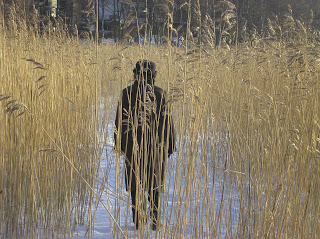 “All great literature is one of two stories; a man goes on a journey or a stranger comes to town.” – Leo Tolstoy
“All great literature is one of two stories; a man goes on a journey or a stranger comes to town.” – Leo Tolstoy
Lisa and I were talking about Steven Spielberg, and that had me thinking about how this great modern storyteller’s work fits Tolstoy’s observation. Stories are about our encounter with the unfamiliar. Either we have gone on a journey and find the unfamiliar along the way, or the unfamiliar comes and finds us where we live, even if we just wanted to stay home and have a cup of coffee. Consider two of Spielberg’s many great films: Jaws, and Schindler’s List.
Jaws (one of my very favorite movies, precisely because the storytelling is so masterful) is like so many great tales that follow the “stranger” model: a monster has broken the security of our peaceful home, and the hero must conquer the monster and restore peace. Police Chief Brody had expected the island to be a quiet refuge from the dangers of New York City, only to have a more ominous danger rise from the deep (metaphor alert!) Classic stories of this type include Beowulf (both the monster and Beowulf are strangers, by the way.)
Schindler’s List, on the other hand, is a journey. (Bear in mind that most journeys in story are metaphorical; the hero travels from one emotional, psychological, spiritual, or moral state into another.) At the start of this movie Schindler’s motto is “What’s in it for Schindler?” By the end, he is weeping with regret that he had not been able to save even more lives. Classic stories of this type include, of course, the Odyssey.
The unfamiliar or the unknown is at the root of many of our fears, maybe even all of them. We don’t know what will happen to us if we try X; will that new person be our friend or not; if I go to the different place will I be safe? But because stories, at their core, are about meeting the unfamiliar, they help us experience that meeting again and again – in safety. They are a way to practice encountering strangers, facing the thing in the shadows that we can’t see. We can be fortified by this practice and apply that courage in our life.
(Readers interested in exploring what mythology and legend can tell us about the Shadow, our projection of our negative qualities onto a faceless enemy –may want to read Joseph Campbell, or watch the famous conversations between Campbell and Bill Moyers about “The Hero with a Thousand Faces” on DVD.)
But I would like to add that there are other ways to practice encountering the unfamiliar, and this may be part of our practice of developing our adaptive capacity, our ability to “roll with it” when changes occur. When I catch myself being rigid in my parenting, I know it’s time to loosen up. There is security and comfort in the familiar, for sure, and I know that predictability has been important for my daughter in her transition to life in this country; but inflexible routine can also create tedium and resentment. A few months back, the Lovely K. asked if she could sleep under the dining room table. It was a school night, and my knee-jerk reaction was to say no.
But I caught myself. What’s the worst that can happen? A poor night’s sleep and thus a cranky kid the next day? Wanting to sleep somewhere else the next night? A refusal to sleep in her own bed again? Outright sedition and rebellion? Nonsense. What I was really afraid of was change.
Yet change is exactly what I want her to be open to – to trying new things, to being willing to explore, to treat the unknown and unfamiliar as opportunities rather than threats, to have the courage to break away. I want her to develop her adaptive capacity!
“Okay,” I said when I saw where my thoughts were leading me. “Go ahead.”
She eagerly prepared a bedroll, and arranged stuffed animals in her camping spot as I began turning out lights and prepared to go upstairs. “Everything’s different under here,” she said with awed excitement.
Did you see that? That was a journey.
 “All great literature is one of two stories; a man goes on a journey or a stranger comes to town.” – Leo Tolstoy
“All great literature is one of two stories; a man goes on a journey or a stranger comes to town.” – Leo Tolstoy